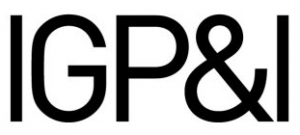Update 21 March 2025
The IMO has set clear targets for shipping to reduce its carbon emissions. By 2030, the goal is to reduce CO2 emissions by at least 40% (compared to 2008 levels), and by 2050, the target is to reduce total annual greenhouse gas emissions by at least 50%.
Getting there will affect all maritime stakeholders. And there is not one single route to decarbonisation – there are many.
Whatever lies next for our Members and clients, Gard is here to provide guidance, support, and insurance solutions. Below is an overview of some of the key changes to be aware of, structured into four main topics:
Industry initiatives
There are several industry initiatives aiming to support and enable maritime decarbonisation:
The Poseidon Principles for Marine Insurance (PPMI) is a global framework for measuring and publicly reporting the climate alignment of insurers’ hull and machinery (H&M) portfolios. It entered into force in April 2022, and Gard is a Signatory and founding member to the principles. For more information about the practical implications, read this article or review our general guidance to our Members and clients. To learn more, visit the Poseidon Principles for Marine Insurance.
The Sea Cargo Charter (SCC) is another framework that enables shipowners, charterers and cargo owners to align their activities and promote shipping’s green transition. Similar to the Poseidon Principles, signatories commit to assessing their climate alignment, and the SCC publishes a report disclosing the climate alignment scores of its members. Find out more at Sea Cargo Charter.
The Getting to Zero Coalition is a partnership between the Global Maritime Forum, the Friends of Ocean action, and the World Economic Forum. It brings together decision-makers from across the shipping value chain with key stakeholders from the energy sector and from governments.
Gard is a member of the coalition, as are many of our members and clients.
The Green Shipping Corridors is another key initiative (related to the Getting to Zero Coalition) where the objective is to have zero-emission vessels operating the major deep-sea trade routes across the globe. The goal is that by 2030, these routes will be supported by the necessary net-zero bunkering and supporting infrastructure and that by 2045, every ship operating on these routes will be using zero-emission fuels. To learn more, visit this Green shipping Corridors report.
Regulatory changes and emissions trading
Climate change and decarbonisation are triggering several policy changes and in the coming years, we will see a complex and challenging regulatory framework emerge. These are some of the key issues the maritime industry will need to follow up on:
Emission trading schemes (ETS) are one of the policy tools increasingly being used to curb global carbon emissions in a cost-efficient way, and existing schemes, both in the EU and in other areas, are currently being expanded to cover also shipping. The EU Emission Trading System will apply to shipping within the EU and for voyages to or from the EU from 2024.
This Gard article gives an overview of what shipowners and charterers should start preparing for. To learn more about the BIMCO Emission Trading Scheme Allowances Clause, visit this Gard article.
The IMO has also implemented a number of measures to steer the industry towards decarbonisation, including the Energy Efficient Design Index (EEDI) and regulations for nitrogen oxides (NOx) and sulphur oxides (SOx). In 2021, the IMO also adopted changes to the Energy Efficiency Existing Ship Index (EEXI) and to the Carbon Intensity Indicator (CII). These changes are expected to enter into force in November 2022, and the requirements for EEXI and CII certification will come into effect from January 2023.
This article provides further guidance on the EEXI regulations.
This article provides information on the CII regulations. Regulatory hurdles relating to biofuels, and the steps recently taken by the IMO to solve this issue, are explained in this Gard article.
Gard experts discuss how decarbonisation targets are being approached by regulators and the maritime industry in this interview. This webinar recording provides more context.
Legal and contractual issues
A changing regulatory landscape also means that contracts and charterparties will have to be reviewed. Below are some of the issues to be aware of:
Buying a vessel that has operated in the EU after 1 January 2025 may bring unexpected costs. Under the FuelEU regulations, buyers could end up with both a vessel and a penalty on their hands.
BIMCO’s long-awaited FuelEU clause was published late 2024. This is a helpful and welcome starting point for Owners and Charterers to agree how calculations and costs will be dealt with under their charterparties. However, as it does not cover everything in detail Owners and Charterers should be mindful of certain issues when incorporating this clause wholesale into their charterparties.
With the changes to the IMO’s Energy Efficiency Existing Ship Index (EEXI) are charter parties flexible enough for the transition phase? How should parties approach the new time charterparties which they are entering into to cater for the vessel’s EEXI compliance? Gard takes a closer look at these questions in this article.
BIMCO issued a CII clause on 17 November 2022. This clause intends to help owners and charterers contractually navigate and collaborate on compliance with CII as an operational measure. It is quite different in nature to other BIMCO clauses because it has to balance charterers’ right to issue employment orders against the need for owners to insist on operational adjustments that might be required to meet the requirements of the CII regulations. This article discusses the key features of the BIMCO CII clause.
Haris Zografakis, Partner at Stephenson Harwood LLP, argues that we need a new contractual structure to reduce greenhouse gas emissions in shipping. “It is short-sighted to approach maritime decarbonisation as a mere regulatory compliance exercise,” he says. “We need to rethink the contractual architecture of the entire edifice of international maritime trade”. Read the full article here.
Fuels of the future
To reach the goals of decarbonisation, shipping and the entire transport sector will have to start transitioning to new and alternative fuels. Some of them are already in use, others are primarily in pilot or testing mode. Most likely, there will not be one single ‘fuel of the future’, but rather several – leaving the industry with complex and challenging decisions to take in the years ahead.
Ammonia is expected to play an important role in decarbonizing shipping. Apart from being a potential zero-carbon fuel (green/blue ammonia), it is also cheaper than batteries and easier to store than for instance hydrogen or LNG. However, significant investments will be needed, both in renewable energy production and in bunkering infrastructure for it to become a viable alternative to fossil fuels. There are also safety concerns relating to its toxicity and corrosive nature, as explained in this DNV video.
Hydrogen, if produced using renewable energy, does not result in any carbon emissions, making it one of the cleanest alternative fuel options. While fuel cells are considered the key technology for hydrogen, other applications are also being studied such as internal combustion engines that have promising marine applications. The main challenges include explosivity, costs, and the lack of supply infrastructure, as illustrated in this video.
Biofuels can also play a significant role in maritime decarbonisation – although it may not be the zero-emission solution in the longer term. Biofuels have low sulphur and carbon emissions, but on the other hand, NOx emissions can be higher than with fossil diesel oils. Moreover, the maritime industry still has limited experience with handling and applying biofuels as part of their fuel supply. Gard provides more information in this article, and further details can be found here. Regulatory hurdles relating to biofuels, and the steps recently taken by the IMO to clear these issues, are outlined in this Gard article.
Liquefied Natural Gas (LNG) is widely considered the leading "bridge fuel" to other alternative fuel options. DNV predicts that by 2050, more than 40 percent of marine fuels will be LNG. However, LNG is not without its disadvantages. It is carbon-based and if not managed correctly, it can result in leakage of methane which is itself a greenhouse gas. Being highly flammable, LNG could represent an increased threat to safety. You can find out more in this article.
Methanol is also considered to be a viable alternative fuel. Currently produced using natural gas, its temperature makes storage and handling much simpler than with other alternative fuels. However, due to methane emissions during production and combustion, methanol may not be a net-zero option in the longer run. Gard provides further details in this article.
Batteries, or electrically operated vessels, are also going to be part of the ‘green technology mix’ going forward. As exemplified in this article about the Yara Birkeland– the world’s first fully battery-operated container vessel designed for autonomous operation – batteries will play a key part in decarbonizing the maritime industry.
The inescapable fact is that the majority of the current world fleet cannot be retrofitted to run on alternative fuels, meaning they will rely on fossil fuels for the rest of their economic lives. A possible solution currently under serious consideration is the fitting or retrofitting of onboard carbon capture (OCC) equipment, enabling carbon dioxide to be captured, transported and stored underground or utilised.
Wind-assisted propulsion (WAPS) is also gaining traction as a means to decarbonize and 2024 saw a host of announcements from shipowners in almost every segment of the market about the inclusion of WAPS on newbuilds or the retrofitting on existing vessels . However, there are contractual issues that should be sorted to avoid potential disputes between shipowners and charterers.
Safety of ships using alternative fuels - ongoing work at the IMO
The International Maritime Organization (IMO) recognises that the use of alternative fuels is crucial to the effective execution of its greenhouse gas (GHG) reduction strategy. Therefore, the IMO is dedicated to ensuring the safety of shipping in the wake of new technology solutions and new fuels in order for shipping to reach its reduction targets.
The International Code of Safety for Ships using Gases or other Low-flashpoint Fuels (IGF Code), which entered into force in 2017, aims to minimise the risk to ships, their crews and the environment, given the nature of the fuels involved. It has initially focused on liquefied natural gas (LNG), but work is now underway to consider other relevant fuel types.
At the time of writing, IMO interim guidelines for the safety of ships using the following alternative fuels are available:
Methyl/ethyl alcohol (MSC.1/Circ.1621)
Fuel cells (MSC.1/Circ.1647)
LPG (MSC.1/Circ.1666)
Ammonia (MSC.1/Circ.1687)
The Sub-Committee on Carriage of Cargoes and Containers (CCC) is responsible for developing technical provisions for the safe use of alternative fuels. According to the committee's current work plan for 2024-2027 (CCC 11 report), a set of interim guidelines for ships using hydrogen as fuel will be finalized for approval at MSC 111 in 2026. In 2025, if time permits, the committee will also finalise interim guidelines for ships using low flashpoint oil fuels, and revise the interim guidelines for ships using methyl/ethyl alcohol as fuel.
Furthermore, the Sub-Committee on Human Element, Training and Watchkeeping (HTW) has agreed to develop guidelines on training for seafarers on ships using alternative fuels and new technologies. This include generic guidelines applicable across the whole industry and relevant to all alternative fuels and new technologies, as well as individual sets of fuel/technology-specific guidelines that are closely aligned with the technical safety provisions developed by the CCC.
Pending publishing of formal regulations and guidelines for a new type of fuel, ship operators are recommended to seek assistance from their classification society in identifying and evaluating safety and operational risks. Any formal approvals will also require discussions with the relevant Flag Administration.
Want to know more?
Contact us at lp@gard.no or customer.experience@gard.no.


